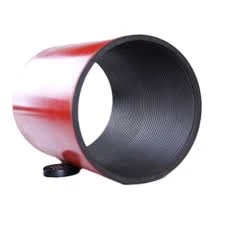- Afrikaans
- Albanian
- Amharic
- Arabic
- Armenian
- Azerbaijani
- Basque
- Belarusian
- Bengali
- Bosnian
- Bulgarian
- Catalan
- Cebuano
- Corsican
- Croatian
- Czech
- Danish
- Dutch
- English
- Esperanto
- Estonian
- Finnish
- French
- Frisian
- Galician
- Georgian
- German
- Greek
- Gujarati
- Haitian Creole
- hausa
- hawaiian
- Hebrew
- Hindi
- Miao
- Hungarian
- Icelandic
- igbo
- Indonesian
- irish
- Italian
- Japanese
- Javanese
- Kannada
- kazakh
- Khmer
- Rwandese
- Korean
- Kurdish
- Kyrgyz
- Lao
- Latin
- Latvian
- Lithuanian
- Luxembourgish
- Macedonian
- Malgashi
- Malay
- Malayalam
- Maltese
- Maori
- Marathi
- Mongolian
- Myanmar
- Nepali
- Norwegian
- Norwegian
- Occitan
- Pashto
- Persian
- Polish
- Portuguese
- Punjabi
- Romanian
- Russian
- Samoan
- Scottish Gaelic
- Serbian
- Sesotho
- Shona
- Sindhi
- Sinhala
- Slovak
- Slovenian
- Somali
- Spanish
- Sundanese
- Swahili
- Swedish
- Tagalog
- Tajik
- Tamil
- Tatar
- Telugu
- Thai
- Turkish
- Turkmen
- Ukrainian
- Urdu
- Uighur
- Uzbek
- Vietnamese
- Welsh
- Bantu
- Yiddish
- Yoruba
- Zulu
Comparing Bull Plugs and Hex Plugs for Optimal Performance and Versatility in Various Applications
Bull Plug vs. Hex Plug A Comprehensive Comparison
When it comes to plumbing and industrial applications, choosing the right type of plug is essential for ensuring leak-proof seals and maintaining system integrity. Two commonly used types of plugs are bull plugs and hex plugs. While they may seem similar, each type serves specific purposes and has distinct advantages. This article discusses the characteristics, uses, and benefits of bull plugs and hex plugs.
What is a Bull Plug?
A bull plug, often referred to as a bullnose plug, is a type of plug with a rounded end. It is typically used for sealing pipe openings in various applications, including water, gas, and hydraulic systems. Bull plugs come with a smooth, rounded exterior, making them easy to install and remove, which is a significant advantage in situations where maintenance and inspections are frequent.
One of the primary features of a bull plug is its ability to create a tight seal due to its design. The tapered end allows for a snug fit in the corresponding pipe, which helps prevent leaks. Bull plugs are available in various materials such as plastic, brass, and stainless steel, making them suitable for a wide range of environmental conditions and pressures.
What is a Hex Plug?
A hex plug, on the other hand, is characterized by its hexagonal shape. This design feature enables easy installation and removal using standard hexagonal tools, such as wrenches. Hex plugs are frequently used in applications requiring a secure yet removable seal, such as in pipelines and machinery where regular maintenance may be necessary.
The hexagonal head provides a larger surface area for applying torque, which helps achieve a tighter seal, especially in high-pressure systems. Like bull plugs, hex plugs come in various materials, allowing users to select the best option based on chemical compatibility, temperature, and pressure requirements.
bull plug vs hex plug

Key Differences
1. Design and Shape The most noticeable difference between bull plugs and hex plugs is their shape. Bull plugs have a rounded end, while hex plugs have a hexagonal head. This difference plays a crucial role in how each plug is installed and removed.
2. Installation Method Bull plugs can be installed and removed by hand due to their smooth design, making them convenient for quick tasks. In contrast, hex plugs require a wrench for installation and removal, which may be more suitable for applications needing a secure installation and higher torque.
3. Applications Bull plugs are often preferred in applications where space is limited, and quick maintenance is needed. Hex plugs are commonly used in situations that require a robust seal and where maintenance responsibilities are more demanding, such as in industrial machinery and pipelines.
4. Pressure Capabilities Hex plugs generally have an edge when it comes to high-pressure systems. Their design allows for a more substantial connection, reducing the chance of leaks under pressure.
Conclusion
In summary, the choice between bull plugs and hex plugs ultimately depends on the specific requirements of the application. Bull plugs offer ease of use and quick sealing solutions for low to moderate pressure applications. Meanwhile, hex plugs provide the strength and security required for high-pressure systems and environments where maintenance is frequent. Understanding the distinctions between these two types of plugs can help professionals make informed decisions, ensuring system efficiency and safety in their operations. Whether you need a quick seal or a robust solution, there’s a plug designed to meet your needs effectively.
-
Tubing coupling plays a significant role in the chemical industryNewsApr.03,2025
-
The Importance of Tubing Crossover in Various Industrial FieldsNewsApr.03,2025
-
The characteristics and important role of Tubing Pup JointNewsApr.03,2025
-
Characteristics and functions of Pup jointNewsApr.03,2025
-
Characteristics and Functions of Pup Joint PipeNewsApr.03,2025
-
Application of Coupling Casing in Various ScenariosNewsApr.03,2025







